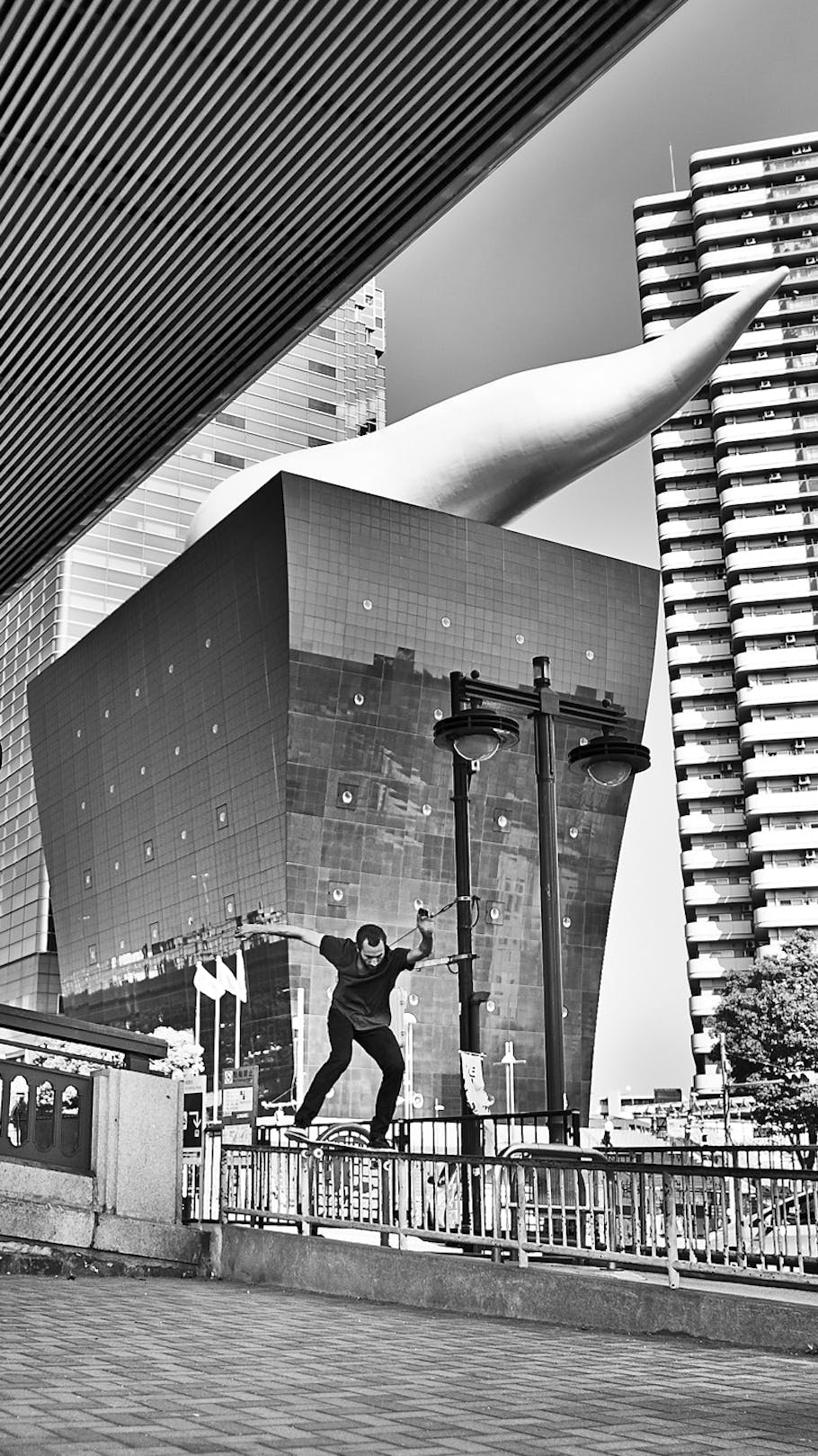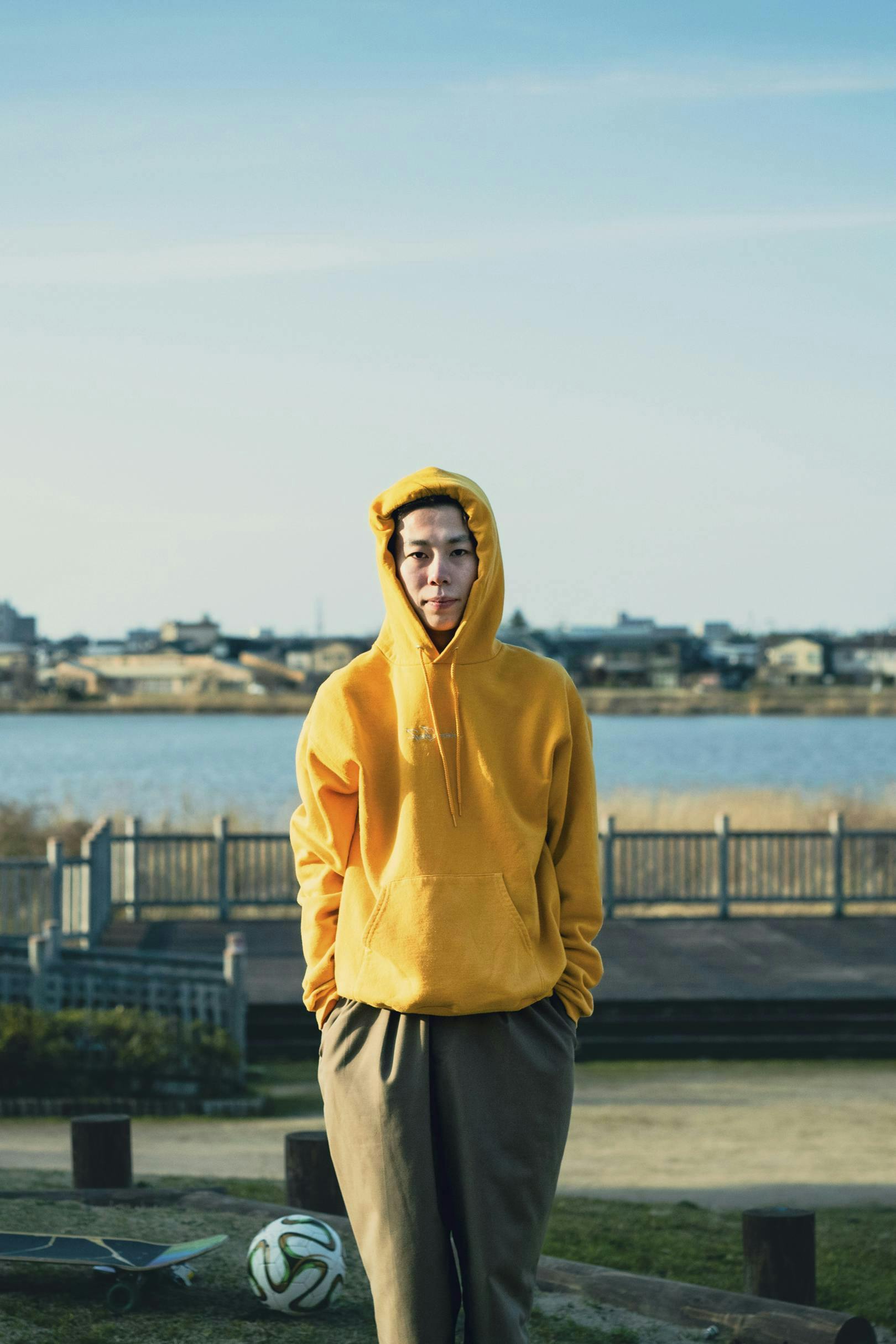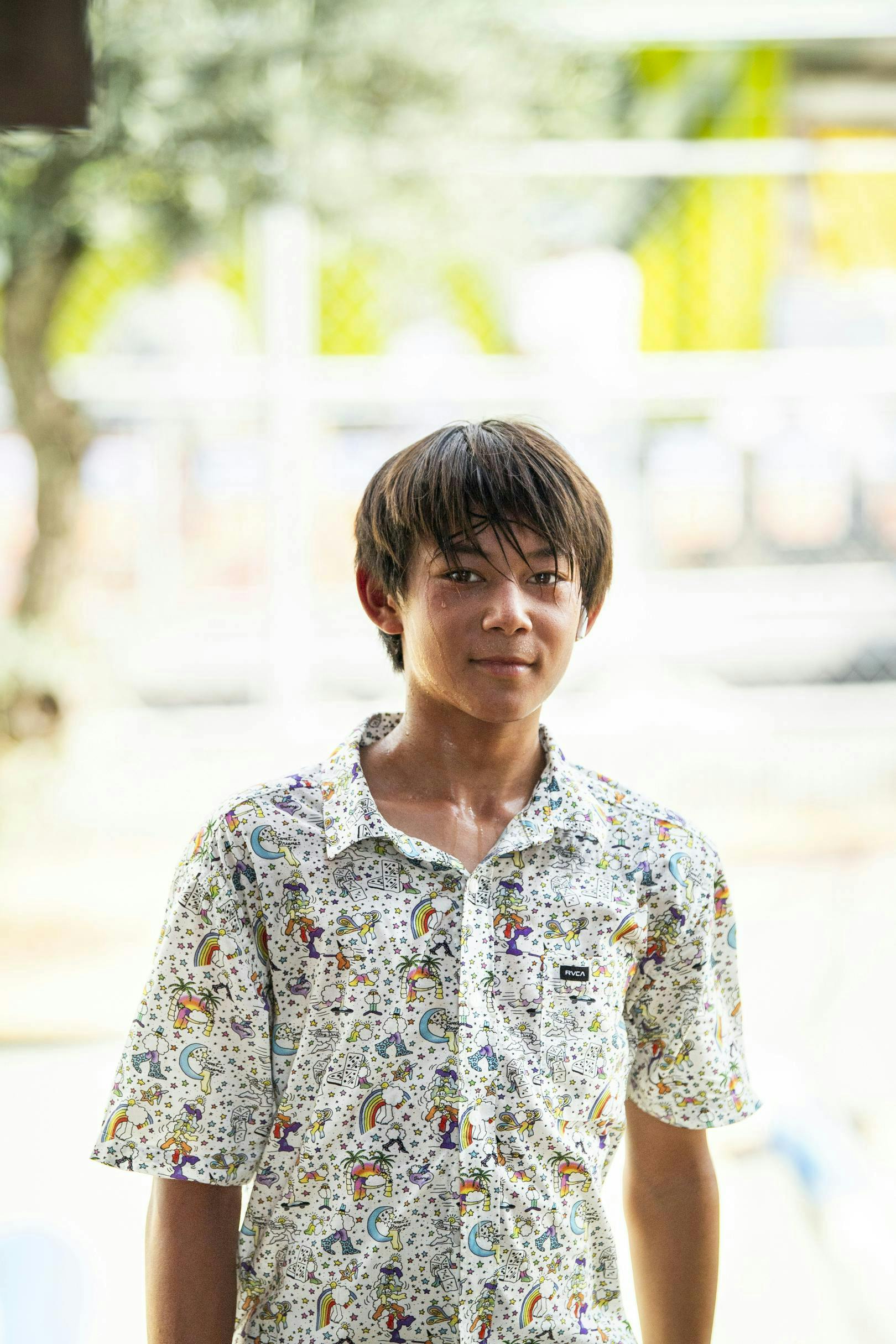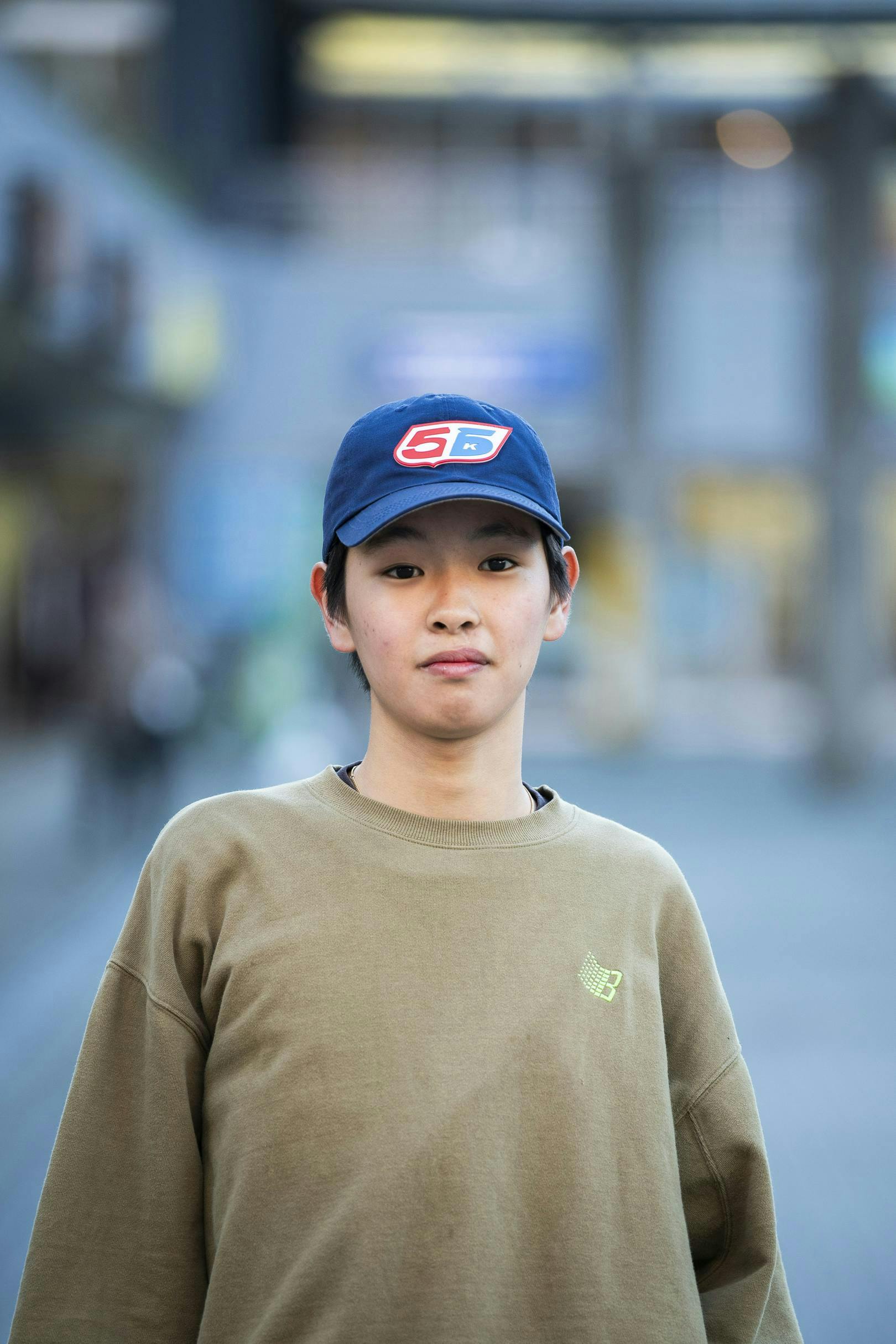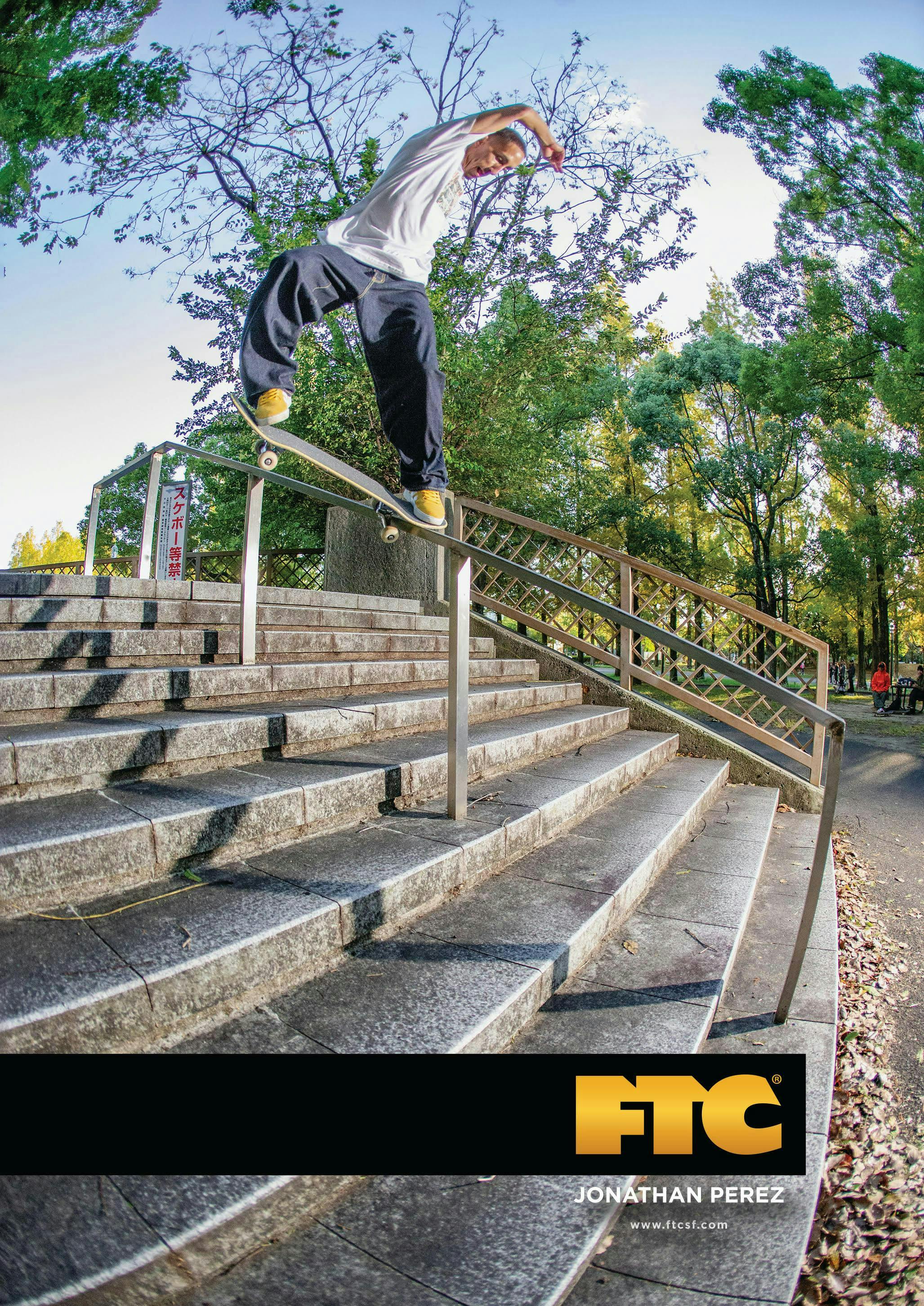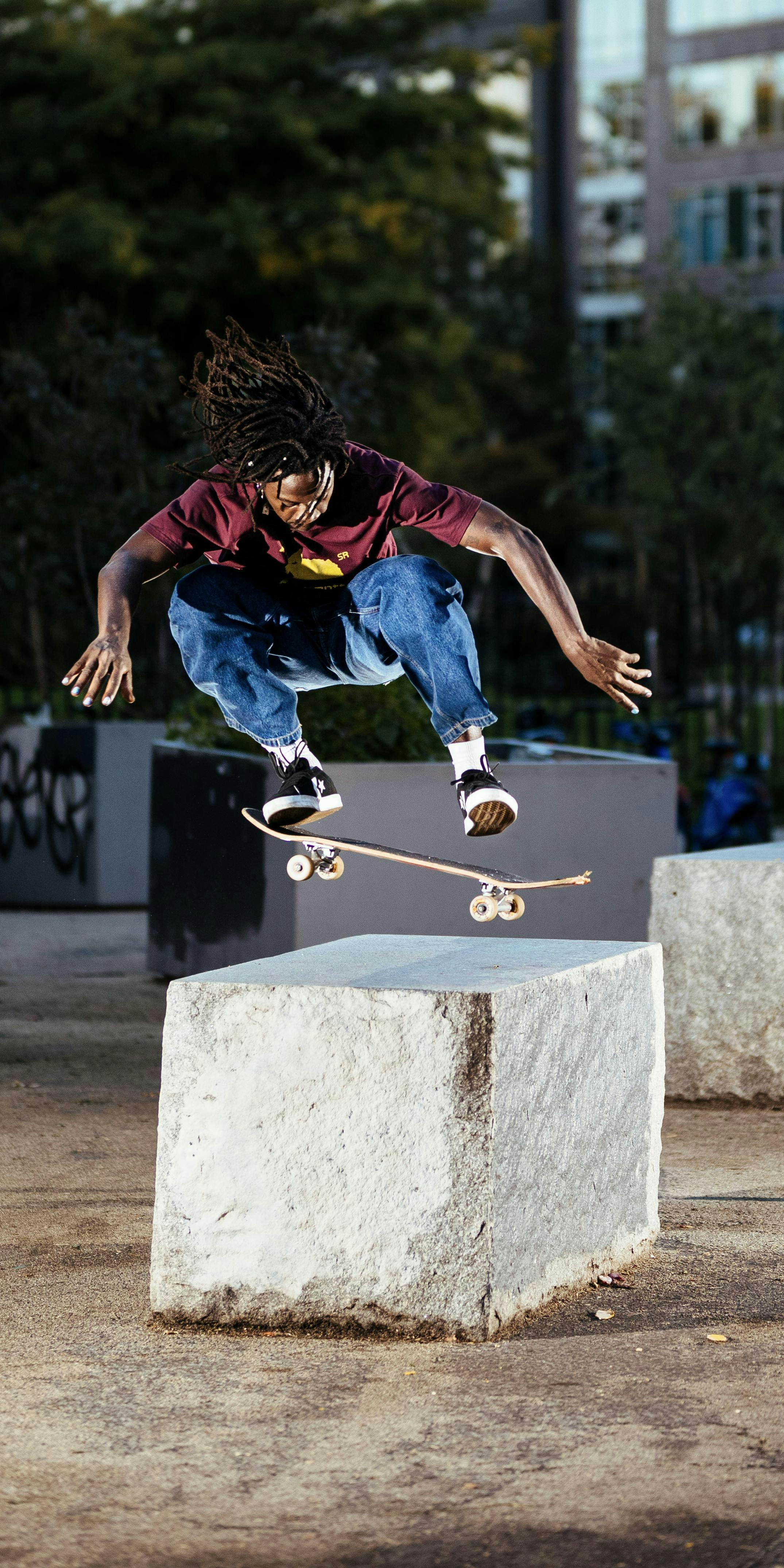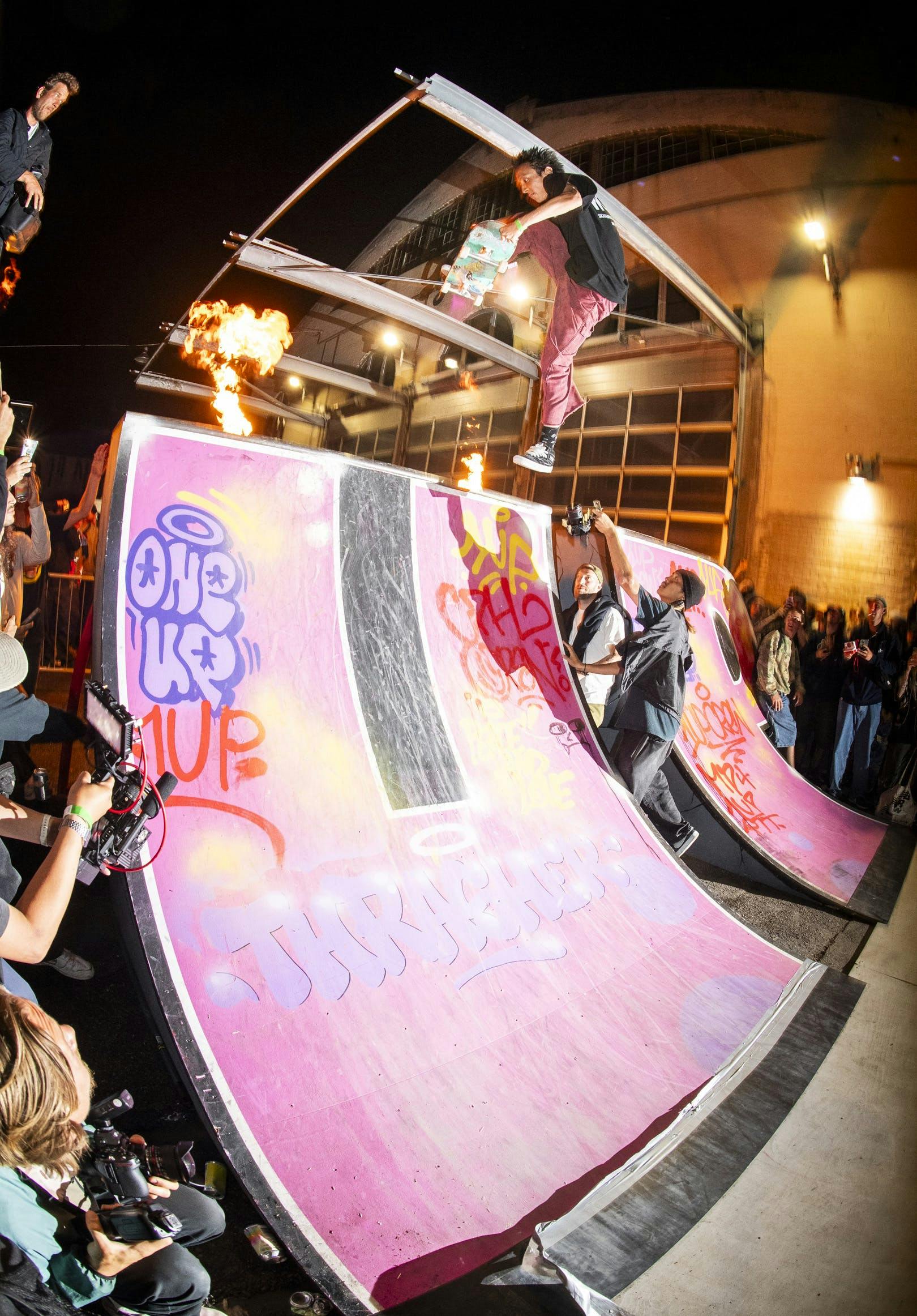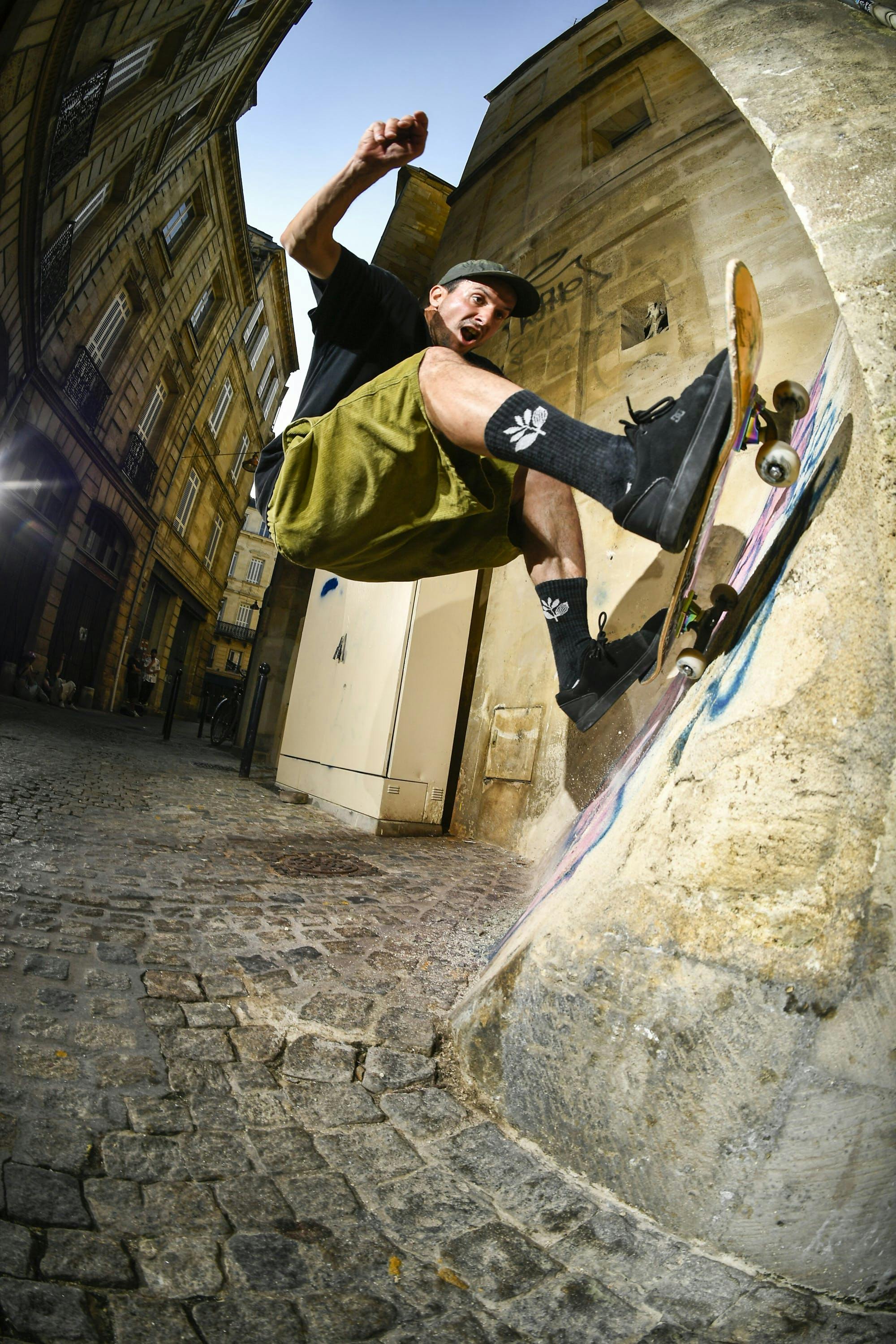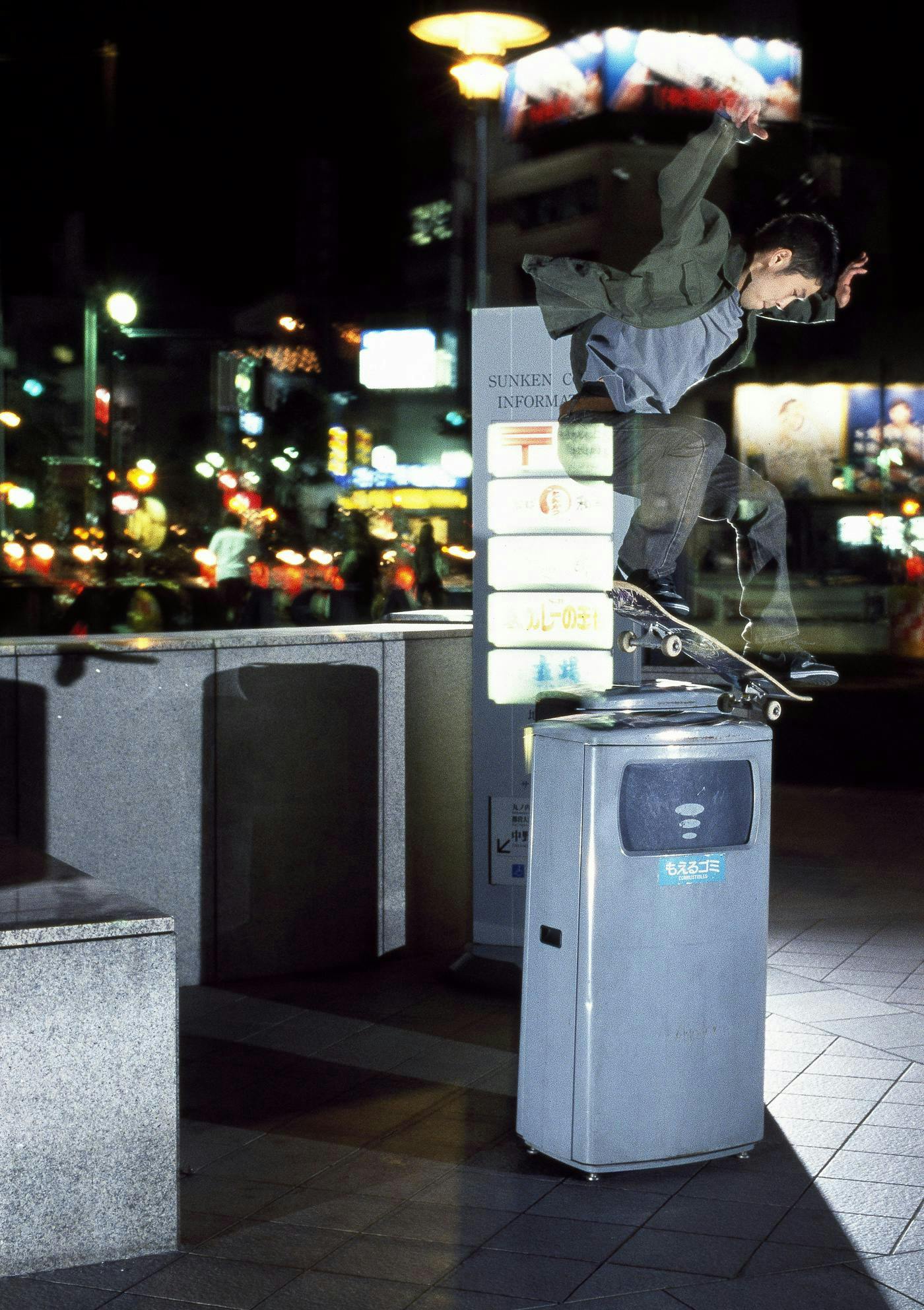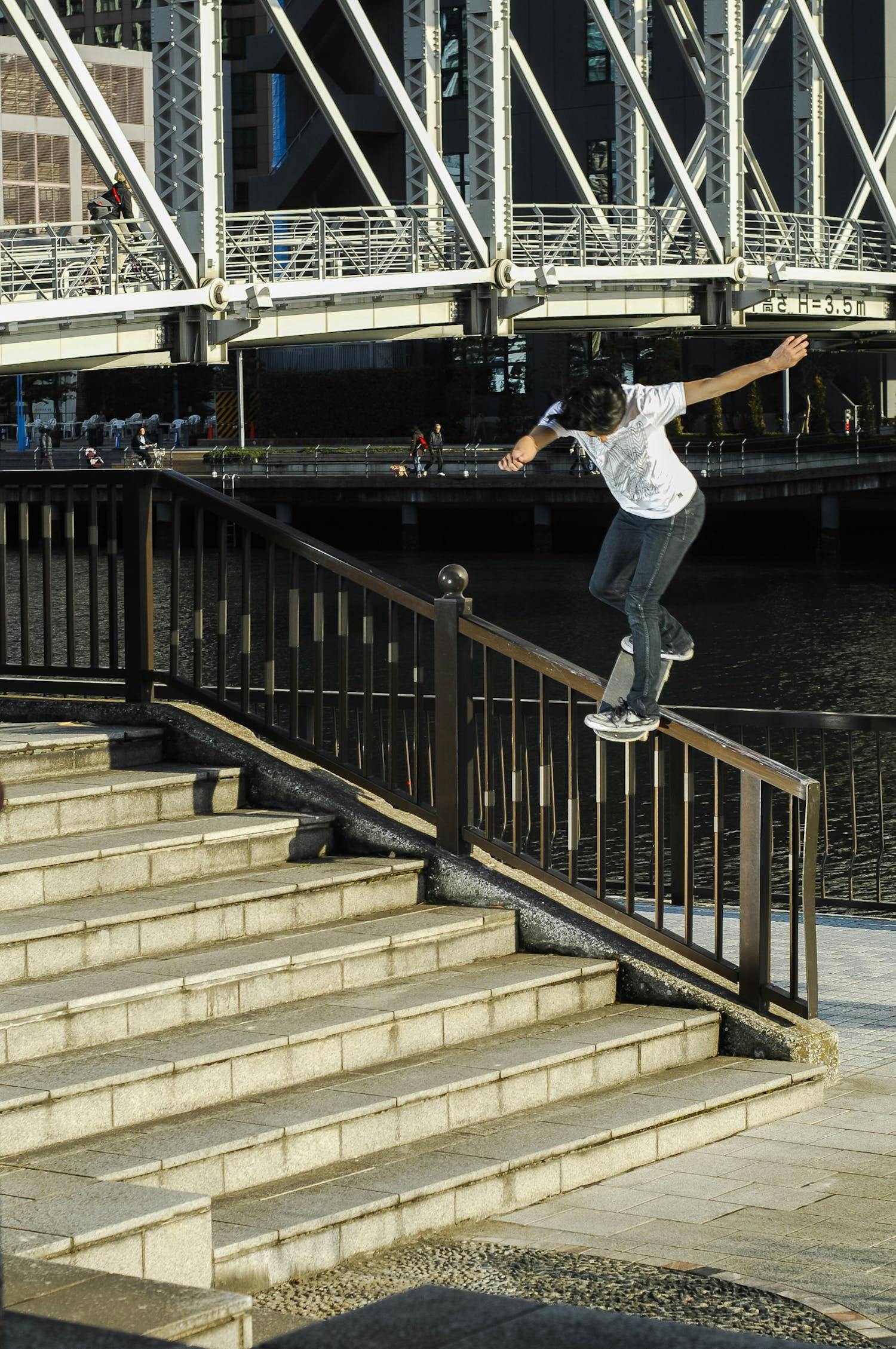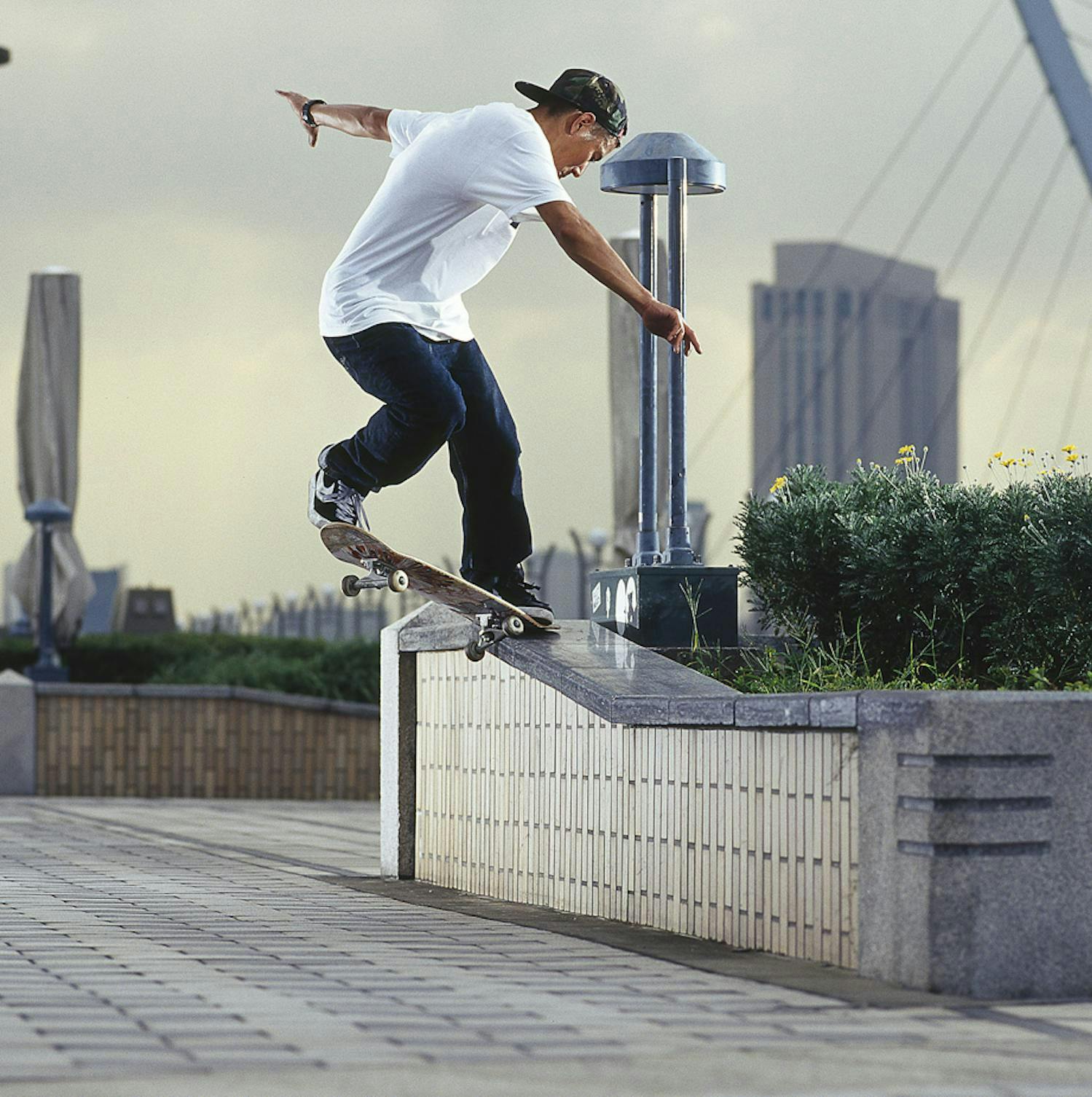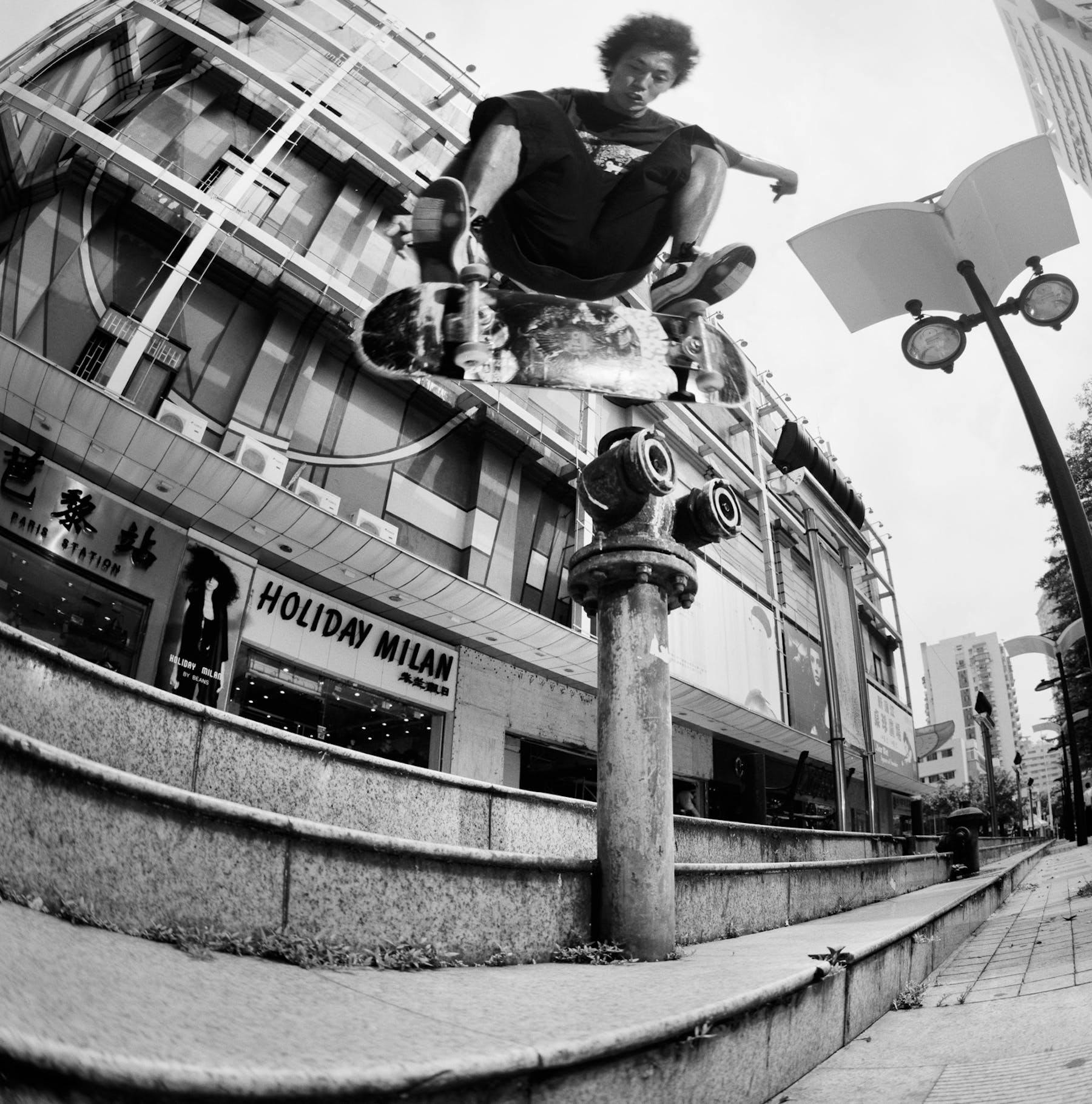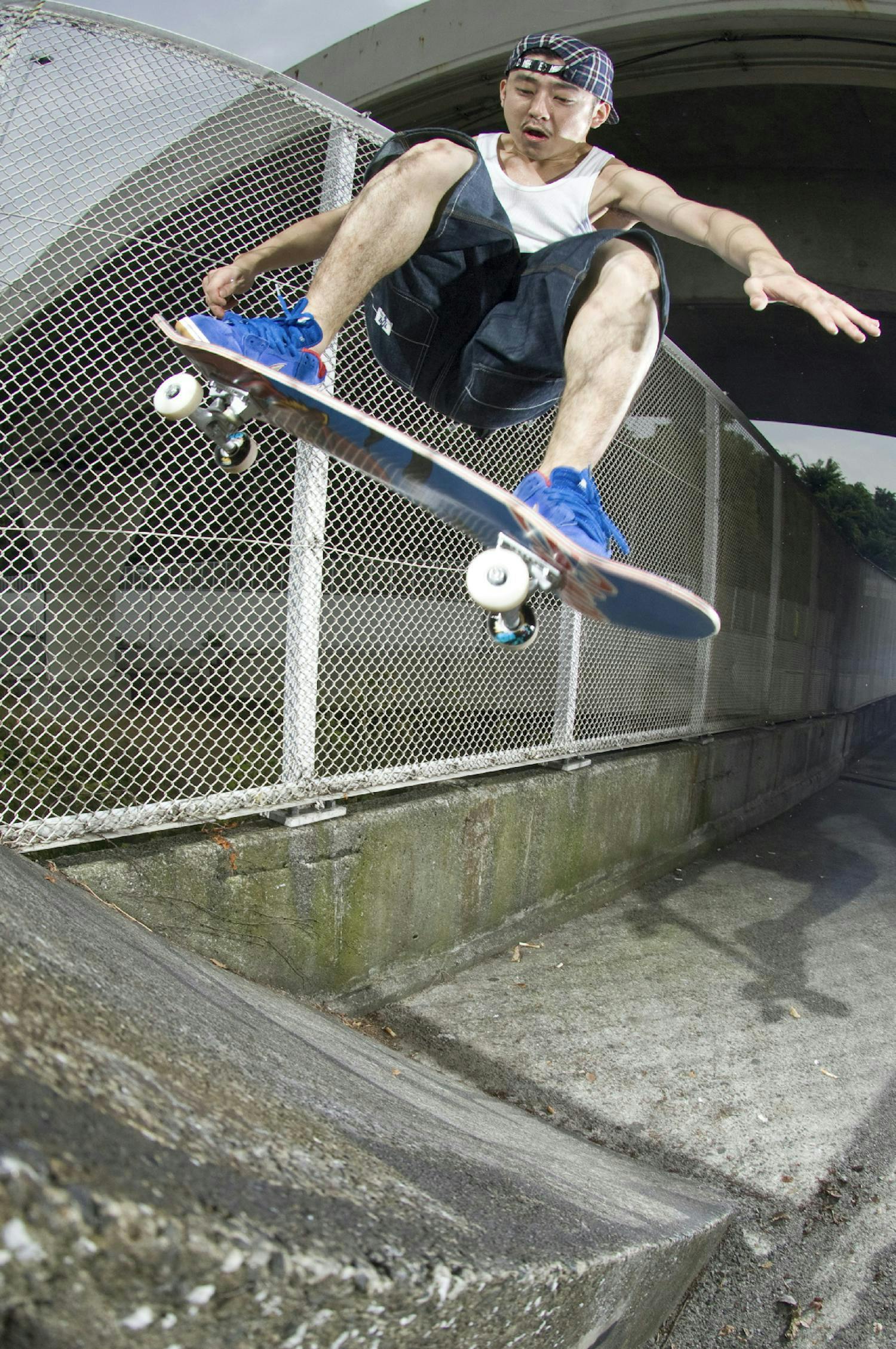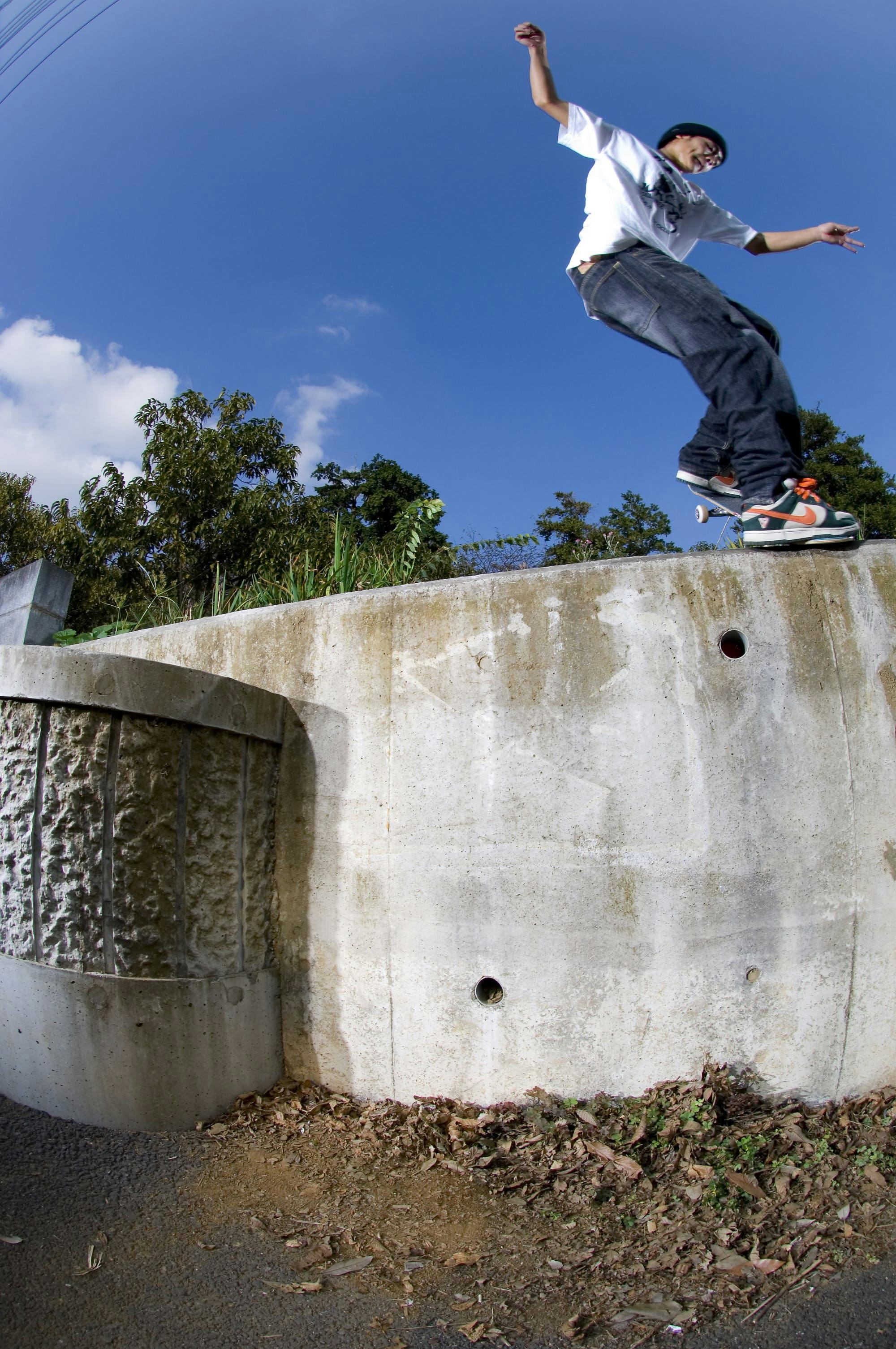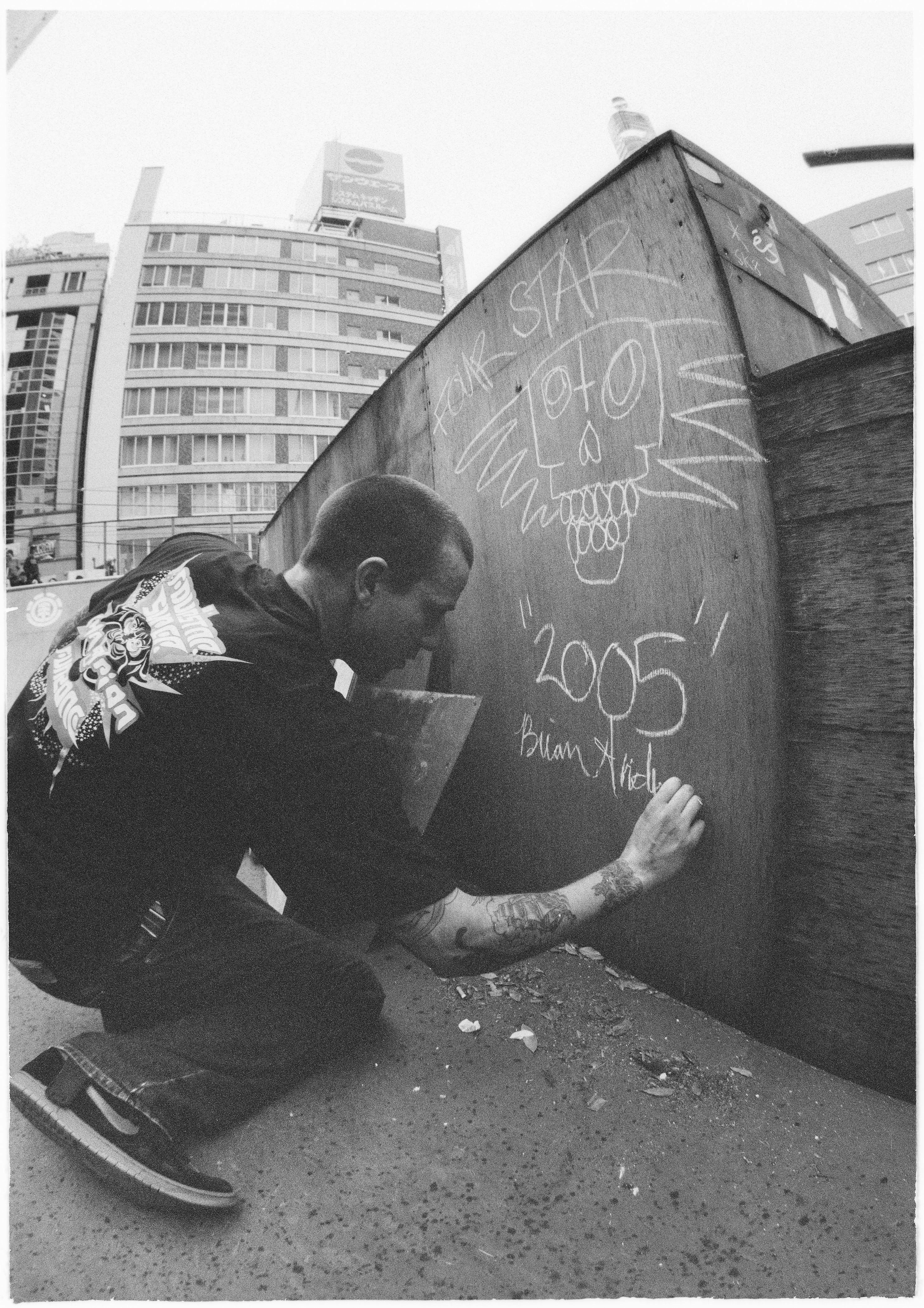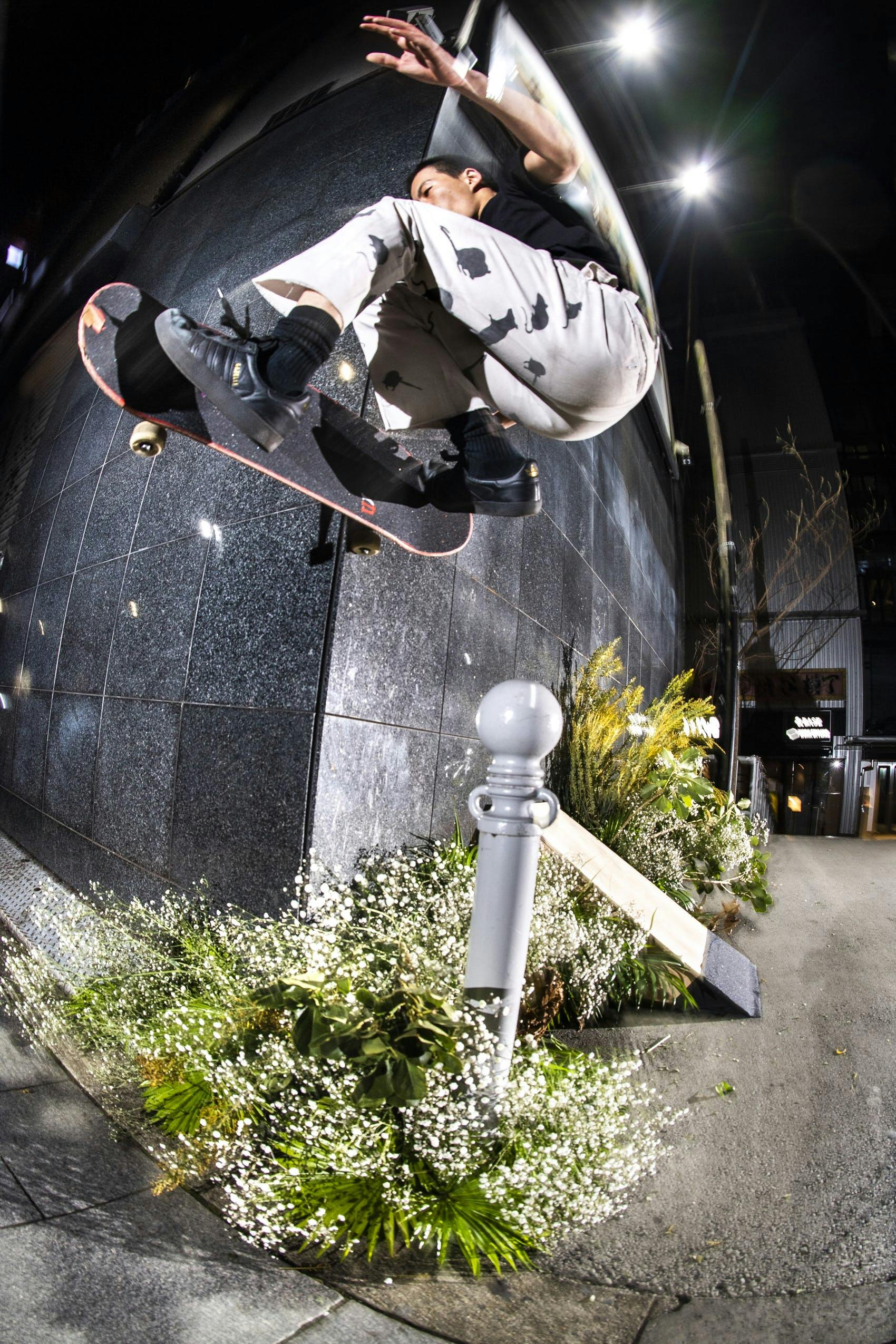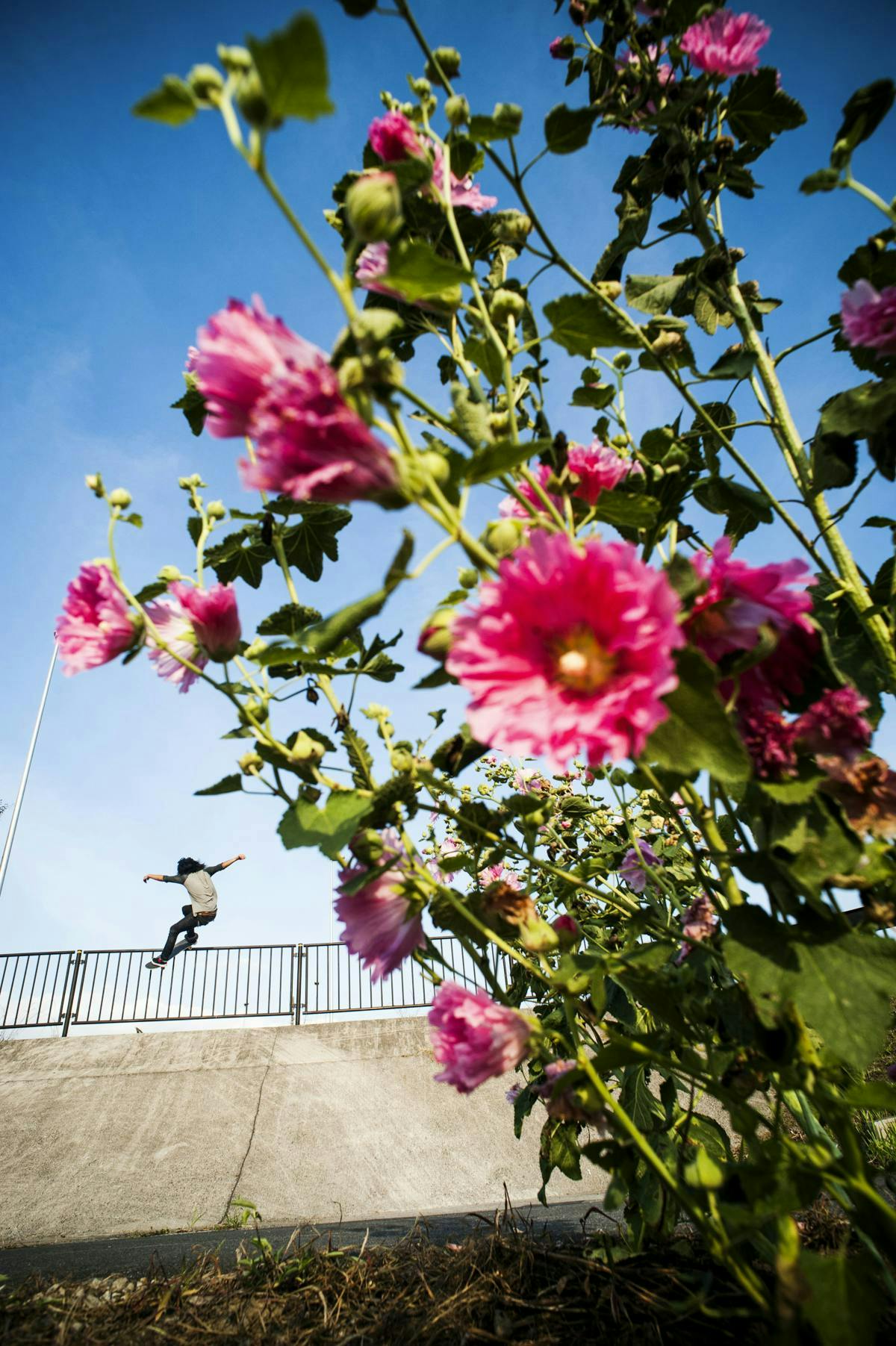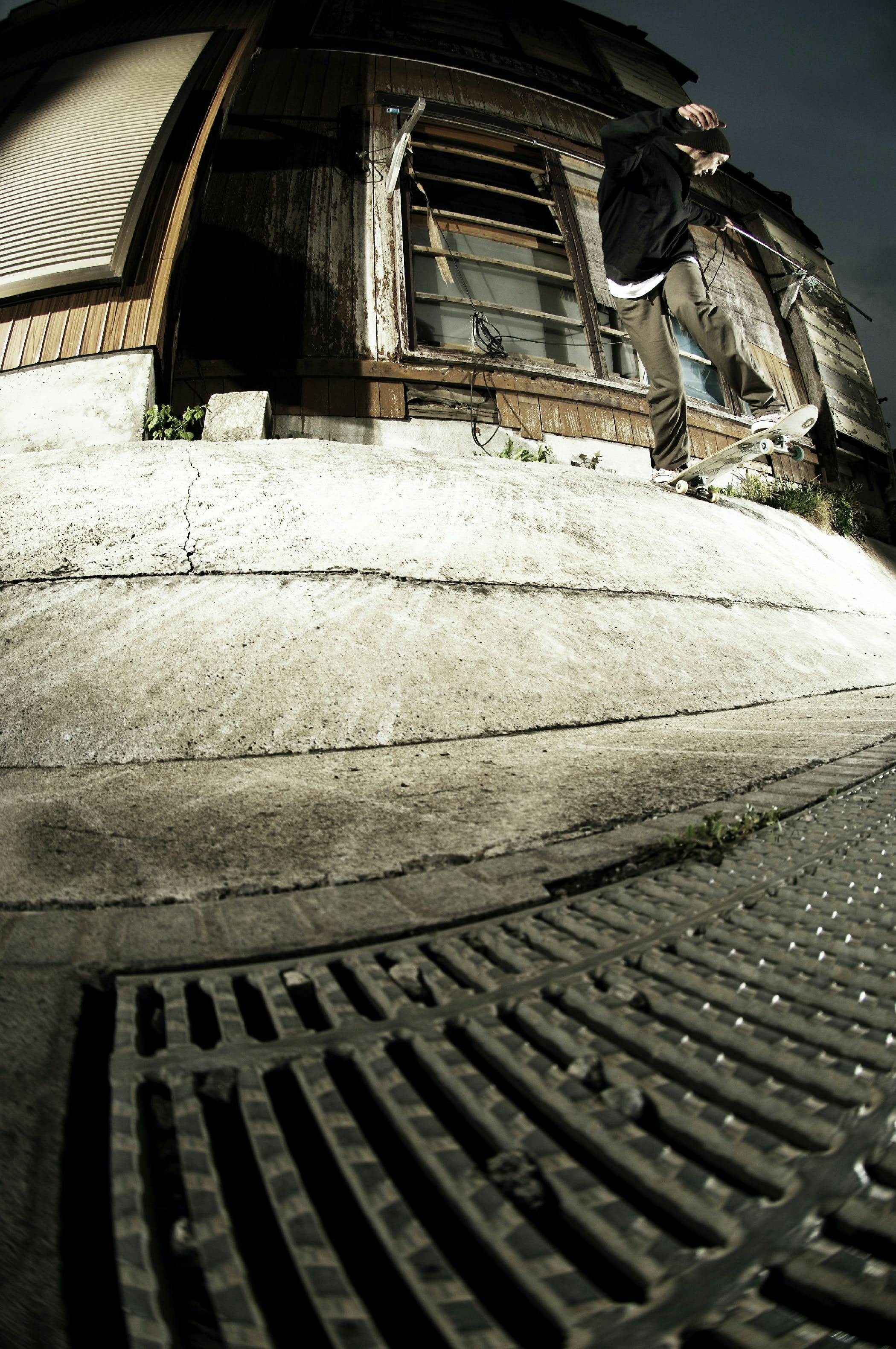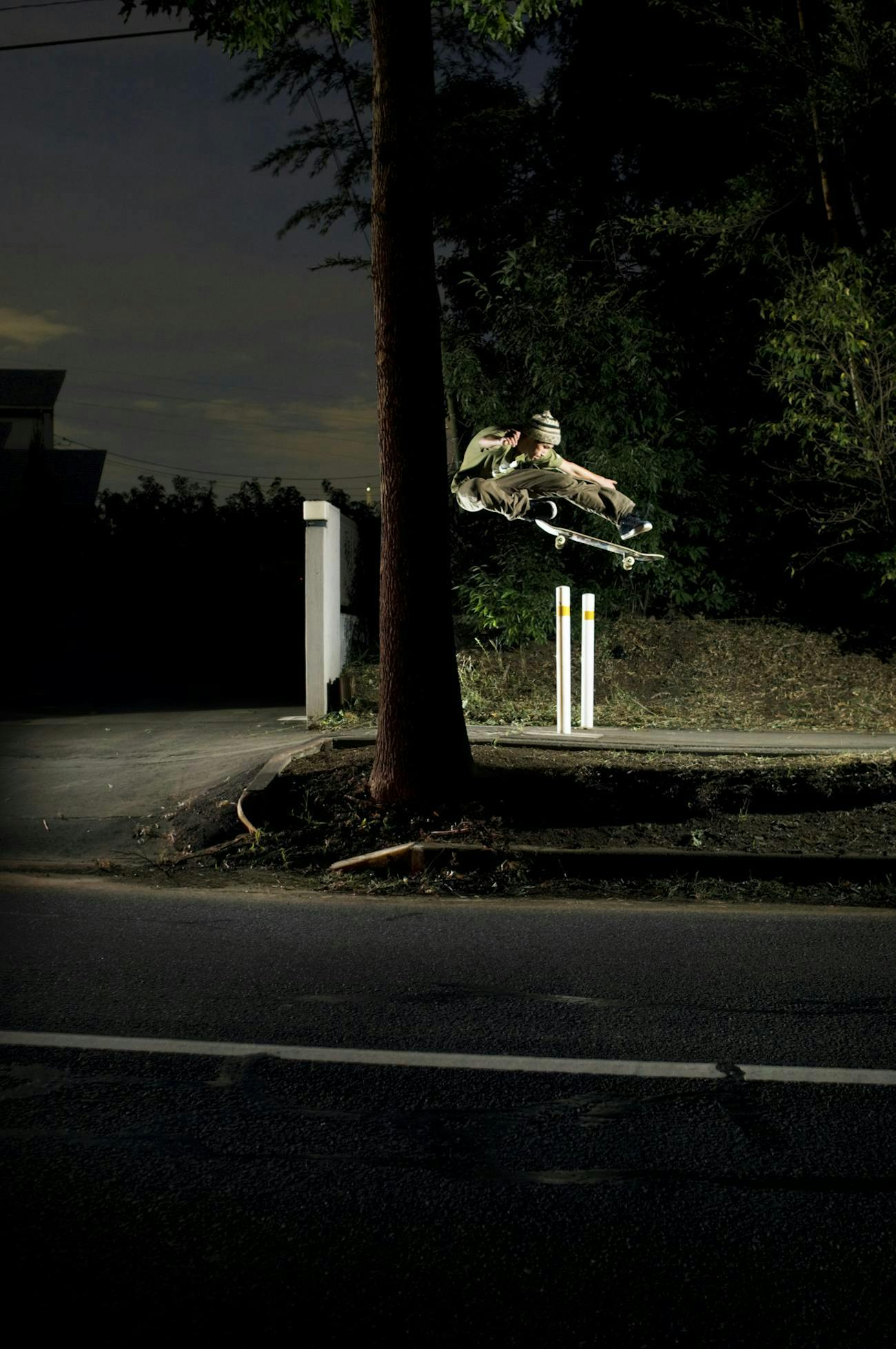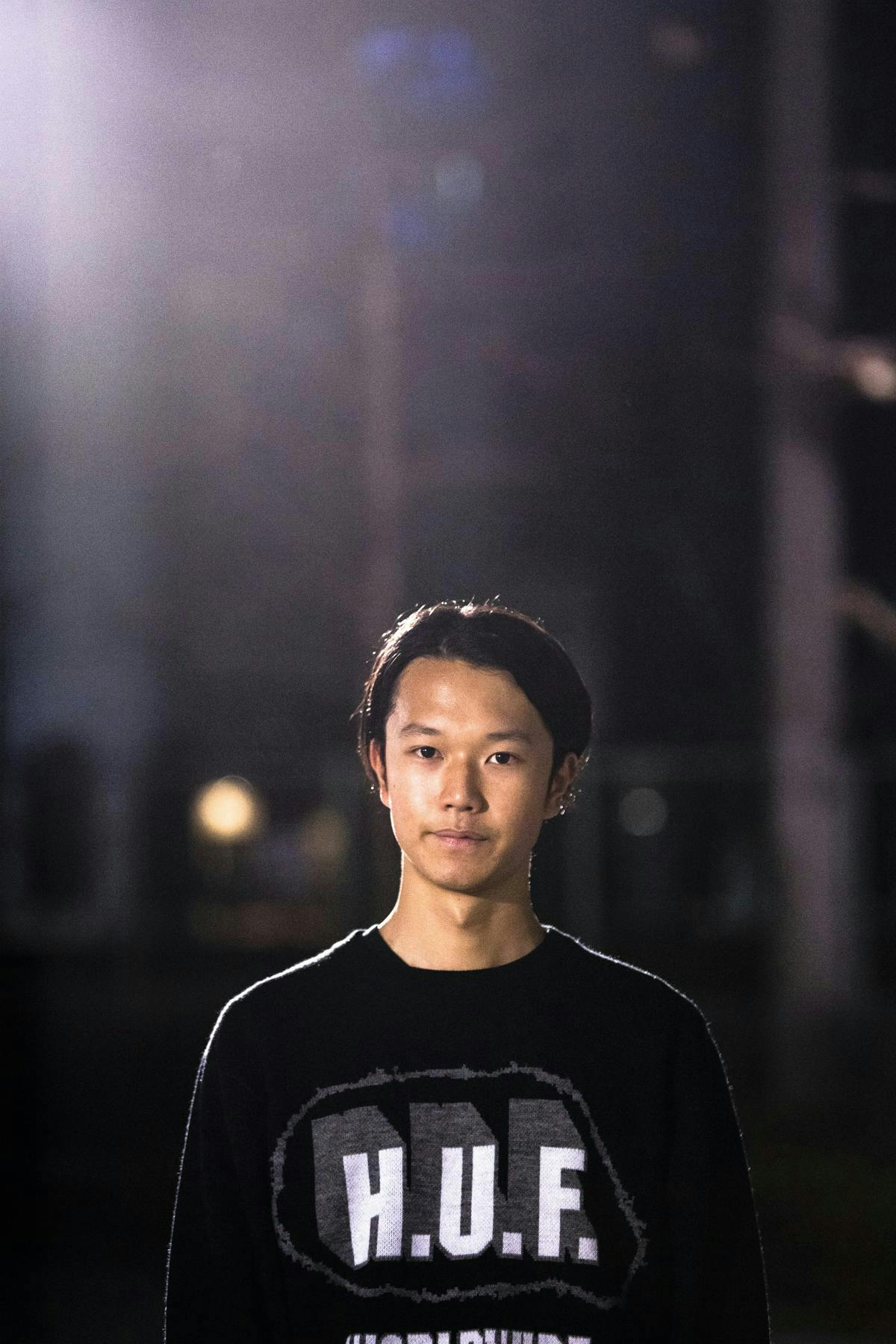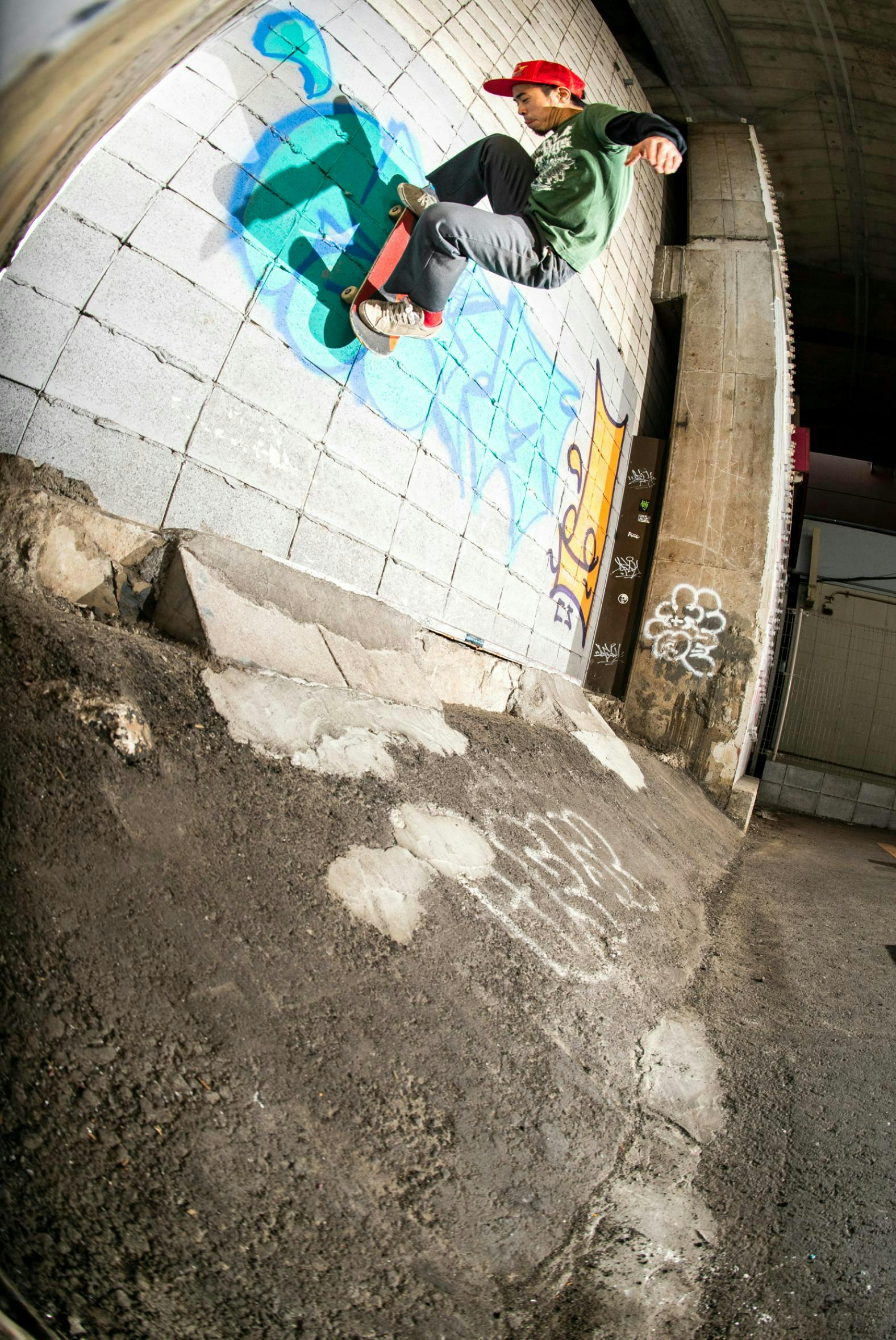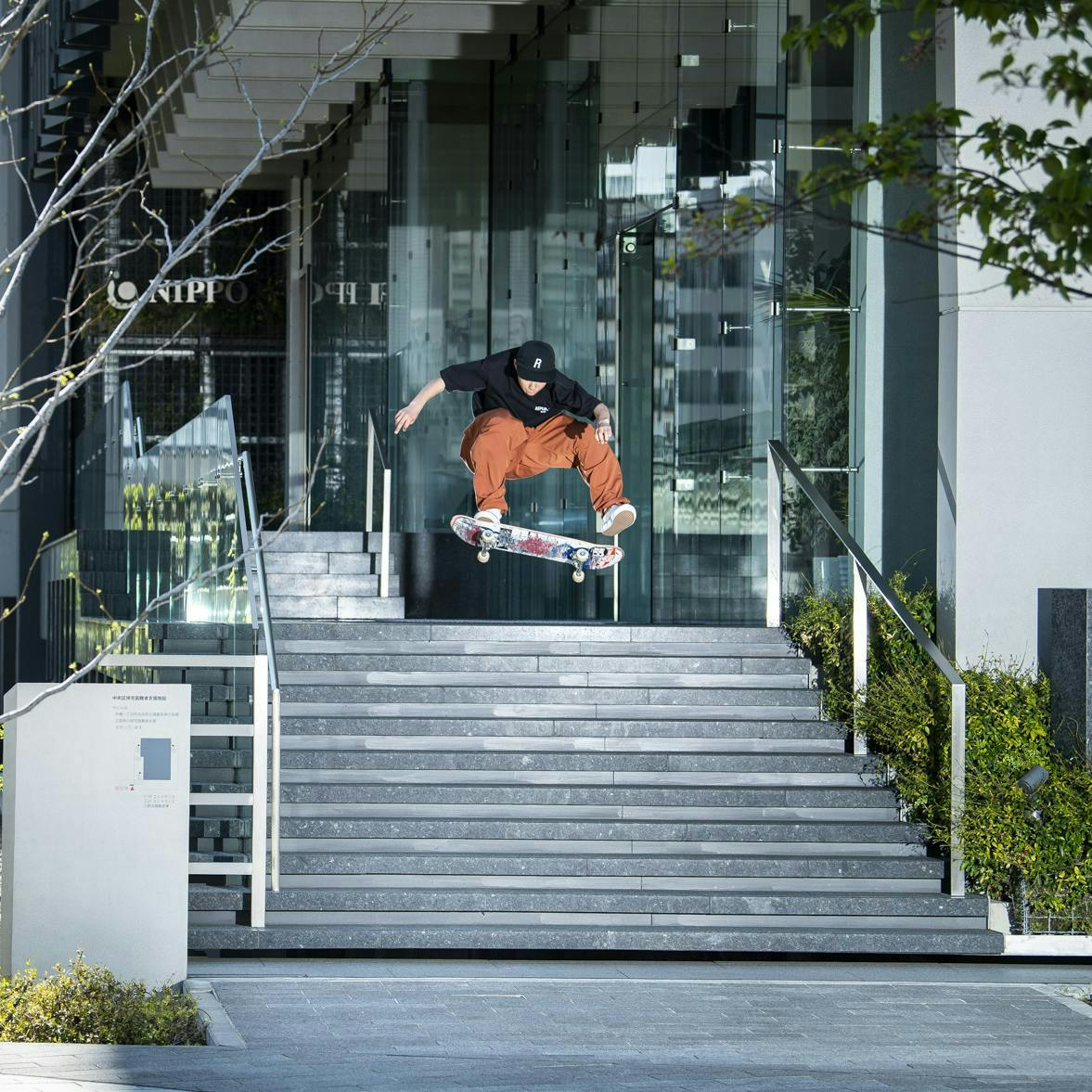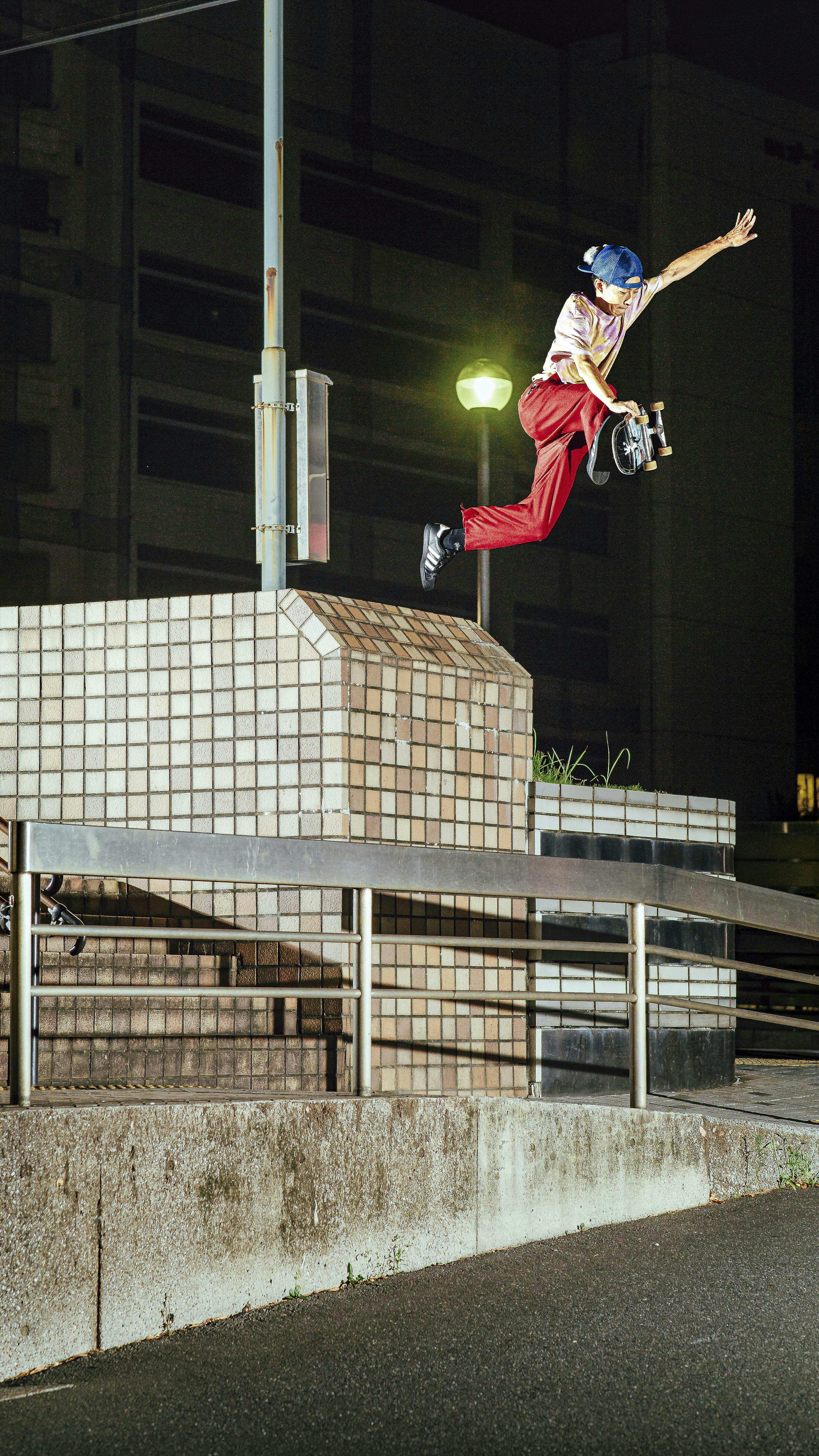
KENTO YOSHIOKA interview "RAT LIFE" by Changsu 【English】
Words and photos by Changsu
Kento Yoshioka, often touted as the epitome of the most productive and influential young skateboarders today, has a life story that is far from smooth sailing. According to reports, after graduating from junior high school, he boldly moved to Tokyo alone and, it is said, spent several years experiencing homelessness. How did this ambitious young man, burdened with lofty aspirations, navigate and survive in the bustling metropolis of Tokyo? What strategies, survival instincts, and logic did he employ to overcome challenges and climb to success? Delving beyond the photographs, we explore his reflections on the unseen period of homelessness.


C: changsu
K: Kento yoshioka
N: Naoya Morohashi(filmer)
C: So, how many years were you homeless?
K: I graduated from junior high, came to Tokyo at the age of 15, and was homeless from April 2015 to April 2018, exactly three years. Now, I’m 24, and it’s my 9th year in Tokyo.
C: Three years of homelessness... that’s intense. Where did you sleep?
K: In the summer, there was a gap next to the elevator in a building in Shibuya Center Street where I could avoid the wind and rain, so I laid cardboard there and slept (laughs). In winter, it was tough, so after hanging out with skaters in Shibuya, drinking at night and fading out when my energy ran out, I’d sleep there. I also slept in places like Setagaya Park, along the river near Tamachi Park, Yoyogi Park, and Inokashira Park. I’d sleep near skate parks or on nearby streets, wake up, skate, and then follow skaters, that was the routine. I often crashed at Instant Skate Shop in Kichijoji too. I also stayed in the storage room of a DJ senpai’s girlfriend in Itabashi for almost a year. The rent for the storage room was 20,000 yen per month, paid whenever I could. She was so kind like a mother, often making meals for me, and I was treated well.
C: Quite a hectic lifestyle (laughs).
K: So, I quit the night school in Itabashi I was attending at the time, worked part- time at a convenience store to save money, and went to New York. Before going, Shake Junzi introduced me to Connor Kammerer so I stayed at Connor’s house and skated every day in New York. I happened to meet Ricardo, a Brazilian filmer, at a spot. We shot together and in one night we got several clips. After that, we shot here and there, and I was able to release a short part on Transworld. I thought, “If I can get on Transworld from one trip to America, that’s amazing! If I keep this up, I’ll come up!” So, when I returned from New York, I had no money or place to stay... I rang the doorbell at the Lesque House in the middle of the night without letting anyone know I was coming by.
C: Quite impulsive, huh? (laughs)
K: That’s when Tsuka-chan, the sales rep, came out, asking, “What are you doing at this hour?” I said, “I don’t have a home, can I live here from today?” I asked, and I rolled in. At that time, Mantaro also lived there and we had a big fight, but he moved out after about half a year (laughs). We were both young, and now we get along. After that, I rented a 6-tatami, one-room apartment in Kichijoji for 40,000 yen and started living alone.

C: So, that’s how your homeless life ended. How did you make money?
K: I was doing “Pocket Patrol,” a video I put out every month of Vantan students filmed on my smartphone and published online. I received money for that. I was invited to demos in various regions, had a monthly article in Ollie Magazine, helped out with a senior’s skate school, and had regular income related to skateboarding. I lived in that apartment for about three years, and eventually, Rio Morishige moved in too. After three years, I started living with my girlfriend and we rented another house in Kichijoji.
C: Living in Kichijoji again! You really like it there.
K: Kichijoji is amazing. You can have fun, skate, there’s Instant skate shop, many skaters, and you can easily meet people. There’s a guy named Shinnosuke in Kichijoji who is a DJ and designer. He was like a sensei who instilled punk spirit and music in me during my sensitive period. While others around me listened to hip-hop, I listened to punk rock. Shinnosuke and Shake Junzi, the two of them particularly influenced me a lot. When I first met Junzi, he said, “Show me something interesting,” so I did a No Comply twice, and he found it amusing. That day, I became SHAKE JUNZI’s rider (laughs). Junzi was the only skater wearing tight pants among skaters in baggy pants. I was greatly influenced, and I also wore skinny pants. I left my hometown at 15 in a rebellious phase, so I thought being different from others was cool. Conceptually (laughs). Now it’s not like that, but at that time, I thought it was cool to do things completely opposite to everyone else...
C: That cynical and anti-attitude is an essential mentality for skaters. The era when skaters were like rebellious kids might be over.
K: Since I was a kid, I had a strong vibe of not wanting to be like everyone else. This was mainly because there was a skater in Ehime named Shingo Yumiyama, who was my senior. For about a year before moving to Tokyo, we skated together every day. So, my approach to skateboarding was heavily influenced by him during my childhood. Also, there was another older skater in Ehime, known as Buta Gorilla- kun, and I feel I was particularly influenced by these two.
C: How did you become a rider for EVISEN?
K: When I checked out “EVISEN VIDEO” when it was released, I was blown away. I thought, “This Japanese brand is seriously challenging the world with such coolness, and I want to be a rider too.” So, I immediately called YUUMAC and told him, “I want to be a rider for EVISEN, so I’m quitting Welcome.” even though I didn’t know if I could become an EVISEN rider (laughs). From then on, I started buying and riding EVISEN boards instantly. Around that time, I was shooting with Naoyan, and he suggested, “Let’s approach KINARI directly.” So, together, we went to KINARI (laughs). In front of Katsumi and Shinpei, as an 18-year-old, I nervously said, “I want to ride for EVISEN.”

C: That’s amazing! What were their reactions?
K: They asked, “Why do you want to join the team?” and with my eyes sparkling, I said, “Because I think EVISEN will present me to the world in the coolest way!” Oh man, this story is so embarrassing (laughs). Then, they were like, “You get it, huh? Okay. You can ride EVISEN boards!” or something along those lines...
(Here, Filmer Naoyan joins the conversation.)
Naoya Morohashi (N): No, that story is totally off. Katsumi-kun was pretty dry about it, like, “Well, let’s see the footage first,” just casually dismissing it, you know (laughs). But Katsumi-kun seemed happy about it.
K: Probably, I’m the only one who went from almost zero relationship to sponsoring and becoming a rider.
C: Oh, really? I thought someone recommended you or Katsumi scouted you. Going after opportunities and seizing them, that’s clever and passionate like Kento.
K: I can’t wait for offers with my personality, so I prefer to charge in myself.
N: At that time, Katsumi-kun saw the beat-up EVISEN board that Kento was riding and said, “Are you buying the board? Well, I’ll give it to you from now on,” but Kento insisted, “Until I become a rider, I’ll buy them myself!!” (laughs). So Kento bought EVISEN boards from Instant while actively working on the footage for “LENZ III.” By the way, this is a side note, but Kento accumulated about 60 minutes of footage that hasn’t been released because he shot with us for such a long time.
C: What!!! So, about 55 minutes of footage was shelved?
K: Since the release of “LENZ III” was still far off, we were wondering what to do with this footage. After officially joining EVISEN, I consulted Katsumi-kun and he decided to release it as an EVISEN part on THRASHER. So, that footage wasn’t originally shot for EVISEN; it was initially for LENZ III.
C: I see. What was the turning point for Kento to officially join the team?
K: When I first talked to KINARI, we had arranged to skate together, so I eagerly joined any EVISEN rider’s shoot and showed off in front of Katsumi. He acknowledged my skills, gradually accepted me, and started shooting more seriously. I always give my best during filming, but when Katsumi is around, I push it up a notch, thinking I have to do something crazy right in front of him. That vibe hasn’t changed at all.

C: You have a huge number of followers on Instagram, right? Why is that?
K: When I was 19, I met Shinpei Ueno at a club and he handed me 10,000 yen, saying, “Hey, Kento, you’re working hard on LENZ. Let’s all have a drink.” After a heated discussion, he said, “Kento, you’re better at skateboarding than me, but I have more money. Do you understand what that means?” That lit a fire in me to become famous and popular. After that, when it came time to decide on the soundtrack for my part in EVISEN, I suggested using a 5LACK track to Katsumi. At that time, everyone from our generation was listening to 5LACK and I thought if the soundtrack for EVISEN’s first part was by 5LACK then everyone would watch it. But when it came to collaborating as a skater with a musician, I felt it would be disrespectful if the skater wasn’t as famous as they were. At that time, 5LACK had around 50,000 followers on Instagram, so I thought I could only ask to use his track only after I got more followers than him on Instagram. So, I listed all the tricks and topics that no one was doing in my head, wrote them down in my notepad, filmed them with my smartphone, and posted them every day. As expected, they all went viral, and my followers increased to about 60-70,000 in one go. Then, with more followers than 5LACK, I approached Katsumi through Katsumi and got the offer for the music.
N: This isn’t just about this time; every time we start a project or shoot a part, Kento lists all the spots and tricks he wants to try and films them. It’s not just tricks, but also attitudes and things to keep in mind, all noted down. Like, “Be kind to people.”
C: It’s not like it accidentally went viral; you strategically planned it all, right?
K: In the past, I used to note down even more details. Set deadlines and everything. Like, when to announce the VHS pickup, when to appear in THRASHER, and so on. In my mind, an element to go viral was doing something unexpected. It’s natural – when people witness something beyond their imagination, it surprises them. So, I aimed for that and went to increase my followers. I understand some people think caring about follower count is lame, but I believe follower count is important. In reality, it can add credibility in certain situations.
C: Did someone teach you the method of detailed note-taking and planning with deadlines?
K: No, I’ve been doing it naturally since I was a kid. If you just think about it, you tend to forget, and I wanted to make things happen. I decide everything about the part, like the structure and the music. I propose it to the filmer and editor after deciding once. I also approach musicians after showing them my previous works and expressing my passion.
N: For LENZ III, Kento was the one who specified even the music.

C: Going back to the homeless days, when you first came to Tokyo, who were you
skating with and where?
K: When I first came to Tokyo at the age of 15, I wasn’t skating much on the streets. I was aiming for AJSA in the park. One day, I heard there was a skatepark in Miyashita Park, so I went there. After Miyashita Park sessions, the KP crew was skating at a spot called “Unko Curb” (Translation: “Shitty Ledge”) just below the park. I looked at Tokyo street skaters with admiration, thinking they were so cool. However, Unko Curb was not exactly a prime spot; it was more challenging, it was a difficult ledge to do anything other than slide tricks. That’s why it was called Unko Curb, but coming from the countryside, I thought Unko Curb was super cool – this is TOKYO street! One day, Hiroki Muraoka suddenly appeared there, doing a K grind with that scraping sound. Super cool! I had been checking his videos since my days in Ehime, so seeing Muraoka, Akira Imamura, and Jiro Kaneko at Unko Curb, these three were all legends to me. At first, when I saw Jiro, I thought he seemed intimidating and sharp just by looking at his skateboarding. But even as a kid, he greeted me with a friendly “Good job!” So humble and cool, like a humble legend (laughs). The skating of those three and the KP crew was genuinely shocking, and from that point, my perspective on the city completely changed.
C: I didn’t expect Kento to be a fan of Unko Curb, a shitty ledge enthusiast... (laughs)
K: Around that time, I became friends with the Convenience Crew, who were around the Miyashita area. Haru approached me first, having seen a VHS MAG video I shot when I was in Ehime, saying, “You were in that video, right? Let’s skate together.” Through them, I got to know people of the same age, like Tenma Fukashiro. Seeing Tenma’s skating, I thought I also wanted to go in that direction. Tenma’s style was too cool; we had quite a few fights. He effortlessly landed a wall ride that I struggled to make, among other things. From that point, facing cool street skaters made me lose confidence in my own skating. There was jealousy, and since I was a rebellious kid, we fought. I ended up leaving the Convenience Crew, even though we had become close. We’re good friends now, of course, but back then, it felt like we had a falling out.

C: Coming from your hometown, you clashed with the Tokyo street skaters of the same generation, and there must have been something you felt when you encountered them.
K: I was originally a contest kid... If friends tried the same tricks as me on the street, I’d get angry, break my board, and go home. It’s the folly of youth, right? (laughs) From that point, there was a period when none of friends my age were around, so I started going to various parks alone again. At that time, I was feeling cocky, so in the park I’d look down on kids practicing tricks like handrails with helmets on – I thought they were lame, despite being around the same age. At the same time, I’d do wallrides without a helmet and show off. (laughs) I was genuinely a terrible guy back then (laughs). Later, I met Ryo Motohashi who had a pure vibe, and he acknowledged my skateboarding. He also wanted to shoot not only in parks but on the streets. He invited me to go street skating. After that, I went to Yokosuka with Satoru to shoot for the OURS shop video. There, I met Rio Morishige, the Hongo brothers, YUDAI TV, and we got along well. Naturally, the Apple video project started through these connections. During this period of my life, I learned to appreciate people who genuinely love skateboarding.
C: Those are wonderful encounters.
K: The guys from Convenience Crew and especially Satoru Yoshida, who was the store manager at instant, helped me a lot. I was a bit too much of a kid and we had our fights. It seems I tended to fight with people I really like, haha.
C: You seem to really admire Satoru. Did you ever think of changing sponsor when he decided to start his own skate shop, Riverbirch?
K: At that point, Satoru wanted to energize Instant Kichijoji with younger skaters after his departure, so I decided to stay. He was a legendary store manager, after all. The void left by Satoru’s absence was significant.
C: That’s deep. I haven’t really interacted with him much, but I imagine he’s a warm person like Hocchan, haha.
K: Exactly, that’s the feeling. Love at that level is something others don’t have, I think. I really owe him. The love Satoru gave has been passed on to the young ones working at Instant Kichijoji Store. When I released my pro deck, they decorated the entire wall of the store with my boards and threw a party for me. At that time, Teppei, who had left after a fight, casually showed up at the party. Teppei, who doesn’t drink much, was shotgunning alone in a corner when we suggested shotgunning together. It was hilarious; I cried at that .

C: Kento’s passion and positive vibes are surely attracting good people.
K: That’s why in interviews like this, I want to properly shout out the names of the people who have helped me. Firstly, when I moved to Tokyo, the first person who filmed a part for me was Onan. The footage from that time was announced in VHSMAG’s pickup. VHSMAG was the first media to feature me, so the favor of VHS is genuinely immense. Being featured in such a dope media where guys like Haru and Jiro Kaneko also had parts was a significant confidence boostere for me as a teenager. Also, EVISEN’s art director, Hamachan. He took care of me when I was featured in VHSMAG, and the filmer Kenshin, who filmed me when I was in my hometown was also a huge support. He’s one of the few still making videos in my hometown. And the filmer Koto, who filmed my FEATURE part for VHSMAG, I’m grateful to him. Photographer Iseki-san, who was from the same region often shot me when I had just arrived in Tokyo. Maybe because we’re both from Shikoku, he treated me really well. There’s a time in life when you can no longer be with people who have been with you through a core period, right? But I change the people I move with to achieve significant dreams in each season of my life, and I keep repeating that.
C: Everyone has different life seasons, so there’s no need to feel pressured to align with that.
K: That’s true, everyone has their own life. But the people I’ve been involved with in the past have been crucial individuals in my life, so in this kind of situation, I definitely want to give them a shout-out. I think mentioning their names in an interview is the only timing to return love and gratitude. Also, I genuinely feel blessed with the people who brought me into the public eye. That might be the most significant difference from other young skaters. I’ve been blessed with great friends, and even during the homeless days, someone was always with me. I might have faced difficulties without money or a home, but I don’t remember anything being tough. I didn’t feel bored or lonely because there was always someone around.
C: Through this interview, I think I understand why you have so many allies and can realize your dreams in a positive way. Thank you!
K: Thank you very much!

Kento Yoshioka(吉岡賢人) @japanese_super_rat
Born in 1999. Matsuyama, Ehime Japan
Sponsor:
Evisen skateboards
adidas skateboarding
新宿租界
Maison shakejunzi
Instant skateshop
Film trucks
Bones wheels
